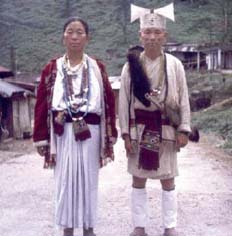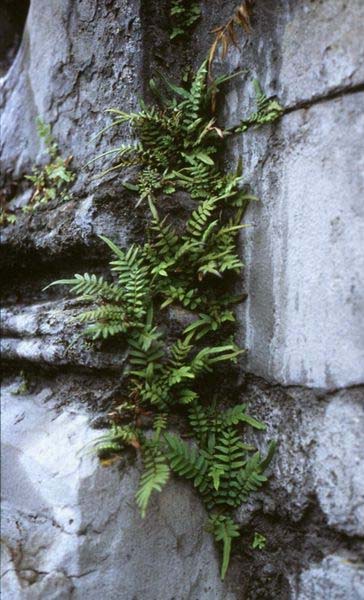Biodiversity
Role of indigenous knowledge system in conservation of forest resources – A case study of the Aka tribes of Arunachal Pradesh – A paper in the Indian Journal of Traditional Knowledge
Posted on 23 Apr, 2011 09:01 PM Indigenous knowledge is the basis for local level decision making in agriculture, healthcare, food preparation, education, natural resource management, and a host of other activities in rural communities.
Indigenous knowledge is the basis for local level decision making in agriculture, healthcare, food preparation, education, natural resource management, and a host of other activities in rural communities.
Inviting endorsements on a submission to the WGEEP for declaring the rivers in the Western Ghats as Ecologically Sensitive Areas (ESAs)
Posted on 22 Apr, 2011 12:58 PMDear friends,
We are all aware of the immense ecological, cultural and social significance of rivers originating and flowing through the Western Ghats. This includes source regions of East flowing rivers like Krishna, Godavari and Cauvery and the source, riparian and estuarine region of all West flowing rivers.
We are lucky to still have some of the very few and very rare 'free flowing rivers' in the country. Most of the rivers in our country have been dammed and diverted. This has changed the ecological and physical characteristics of these rivers completely. Today, it is difficult for us to visualise the amazing range of ecological goods and services that an undammed, free flowing river can provide. Some such rivers in the Western Ghats are Shastri, Aghanashini, Gargai and Seetha Nadi.
Arsenic and chromium hyper-accumulation by an ecotype of Pteris vittata - Possibility of remediation of contaminated water and soil – A paper in Current Science
Posted on 14 Apr, 2011 08:04 PM This study by National Environmental Engineering Research Institute published in Current Science was carried out to identify Pteris vitta and test its hyper-accumulating properties. The plant is commonly known as the Ladder brake fern or Chinese brake fern plant in India, and had been reported elsewhere as an arsenic hyper-accumulator.
This study by National Environmental Engineering Research Institute published in Current Science was carried out to identify Pteris vitta and test its hyper-accumulating properties. The plant is commonly known as the Ladder brake fern or Chinese brake fern plant in India, and had been reported elsewhere as an arsenic hyper-accumulator.
.The remediation of arsenic and chromium contaminated soil and water has become an important environmental issue. It is in this context that the discovery of hyper-accumulator plant species, which have the unusual ability of accumulating metals such as arsenic (As), chromium (Cr), zinc (Zn), nickel (Ni) and copper (Cu) to very high concentrations, has further boosted technologies based on this property.
This is the first report of characterization of arsenic accumulation in an Indian ecotype (plant), which also shows chromium hyperaccumulation in addition to arsenic. Intact plantlets were grown in 20 per cent Hoagland solution amended with up to 200 mg arsenic or chromium medium. Plants absorbed and accumulated a significant amount of arsenic and chromium in their biomass with high bio-enrichment factor. Arsenic and chromium tolerance by spores and gametophytes under in-vitro was also assessed.
Tonnes of fish die in Kelo river, Chattisgarh due to toxic industrial waste - Update from CGNetSwara
Posted on 29 Mar, 2011 03:48 PMAfter exploration she found that more than 3 ton fish have died in Kelo River in last one week.
Patterns of diversity and conservation status of freshwater fishes in the tributaries of river Ramganga in the Shiwaliks of the Western Himalaya – A paper in Current Science
Posted on 20 Mar, 2011 09:47 PMOne tributary was within a protected area (PA; Corbett National Park); the other two were outside the PA (Lansdowne Forest Division). Cast nets were used for fish sampling, which was done from 9.00 a.m. to 5.00 p.m.
Tsunami, mangroves and market economy: No lessons learnt - Article by Devinder Sharma
Posted on 16 Mar, 2011 02:40 PMThe terrible earthquake and the disastrous sweep of the tsunami has left a trail of suffering in Japan. As our hearts go out to the Japanese, and to the impacted people, every natural disaster should provide us an opportunity to access where we have gone wrong.
Earthwatch Institute is looking for Research Manager - Apply by 1st April 2011
Posted on 10 Mar, 2011 11:50 AMForwarded to the portal by : Pranab J Patar
Earthwatch Institute is an international environmental organization that engages people in scientific field research and education to promote the understanding and action necessary for a sustainable environment
Temple fish sanctuaries: Last bastions of native fish and pristine river stretches - A report
Posted on 01 Mar, 2011 12:56 PM
Temple Fish Sanctuaries: Last bastions of native fish and pristine river stretches
National conference on environment and biodiversity of India , North East Centre for Environmental Education and Research, 20th - 22nd December 2011, New Delhi
Posted on 19 Feb, 2011 03:36 PM Organizer: North East Centre for Environmental Education and Research (NECEER)
Organizer: North East Centre for Environmental Education and Research (NECEER)
Venue: New Delhi
Topics:
- Floristic and faunal studies
- Human-Wildlife Conflict
State of knowledge of coastal and marine biodiversity of Indian Ocean countries – An article from the Public Library of Science
Posted on 13 Feb, 2011 08:14 PMThe Indian Ocean extends over 30 per cent of the global ocean area and is rimmed by 36 littoral and 11 hinterland nations sustaining about 30 per cent of the world’s population. The landlocked character of the ocean along its northern boundary and the resultant seasonally reversing wind and sea surface circulation patterns are features unique to the Indian Ocean.





